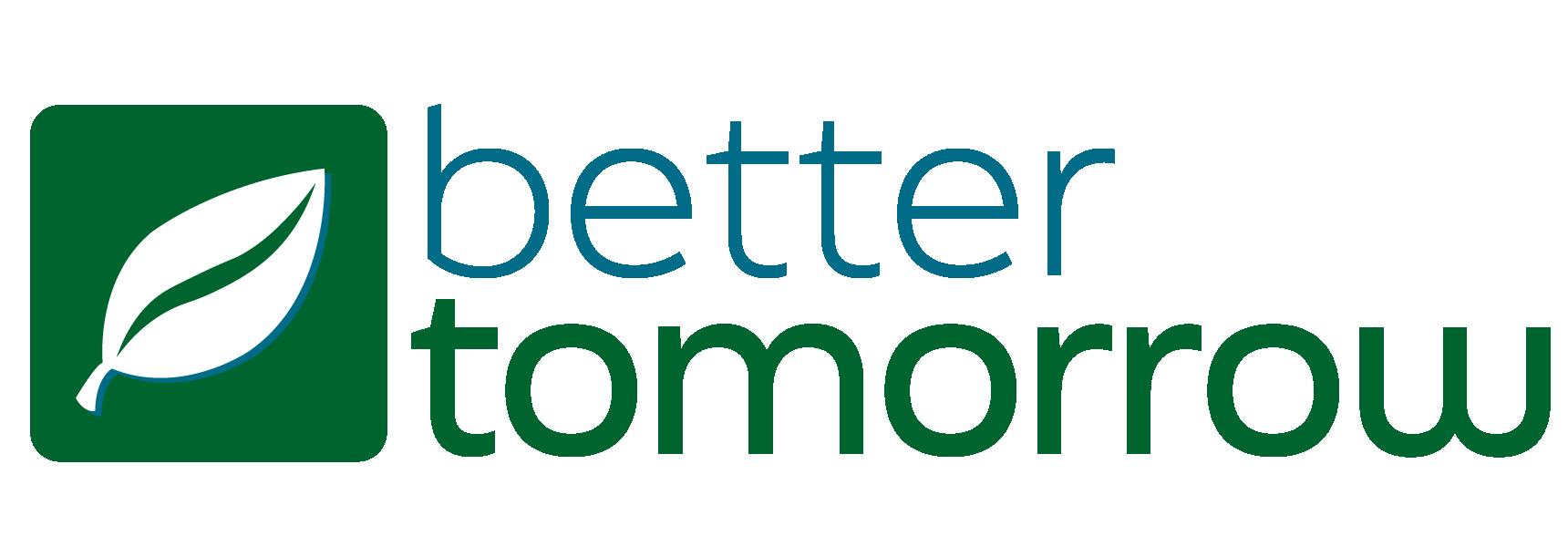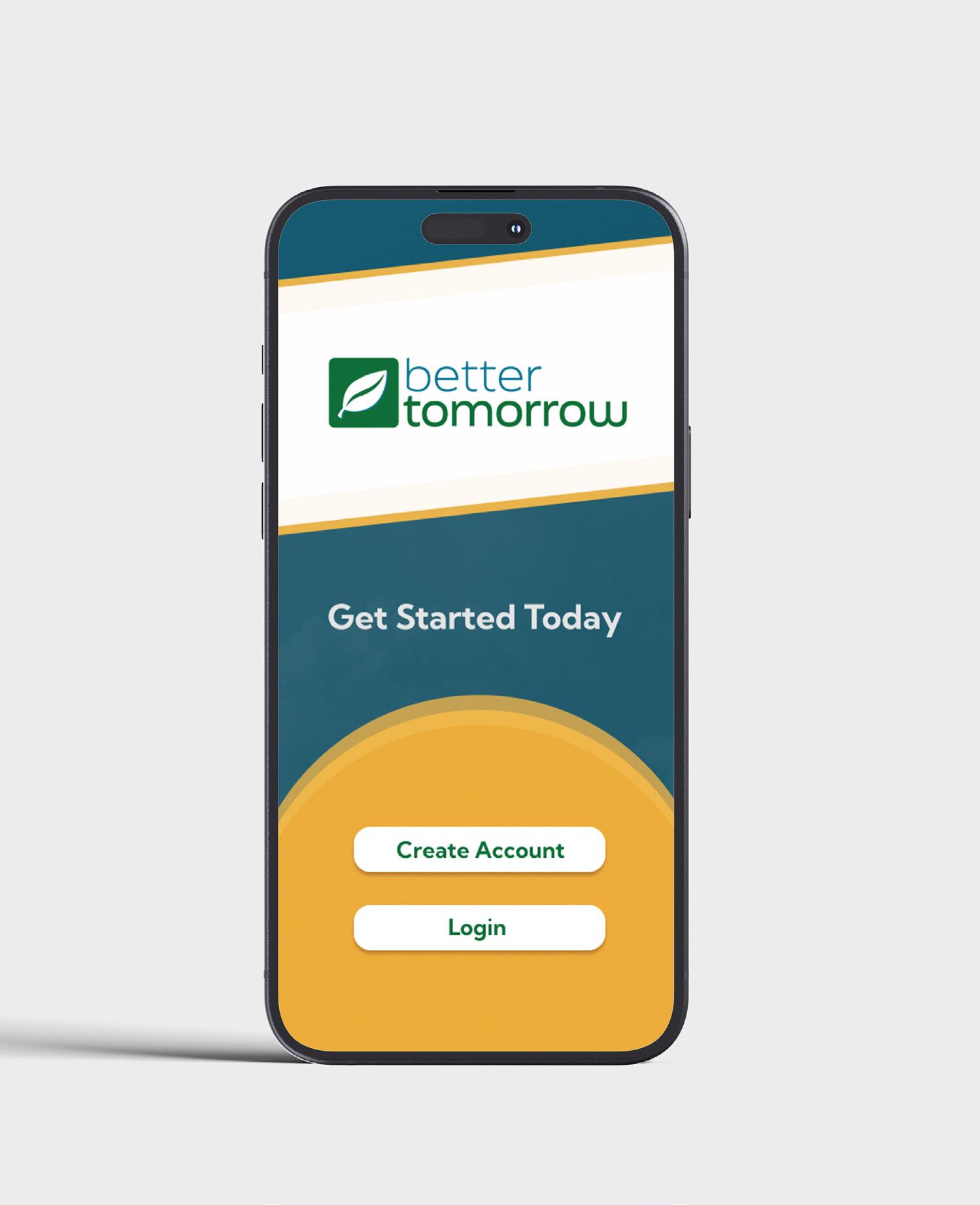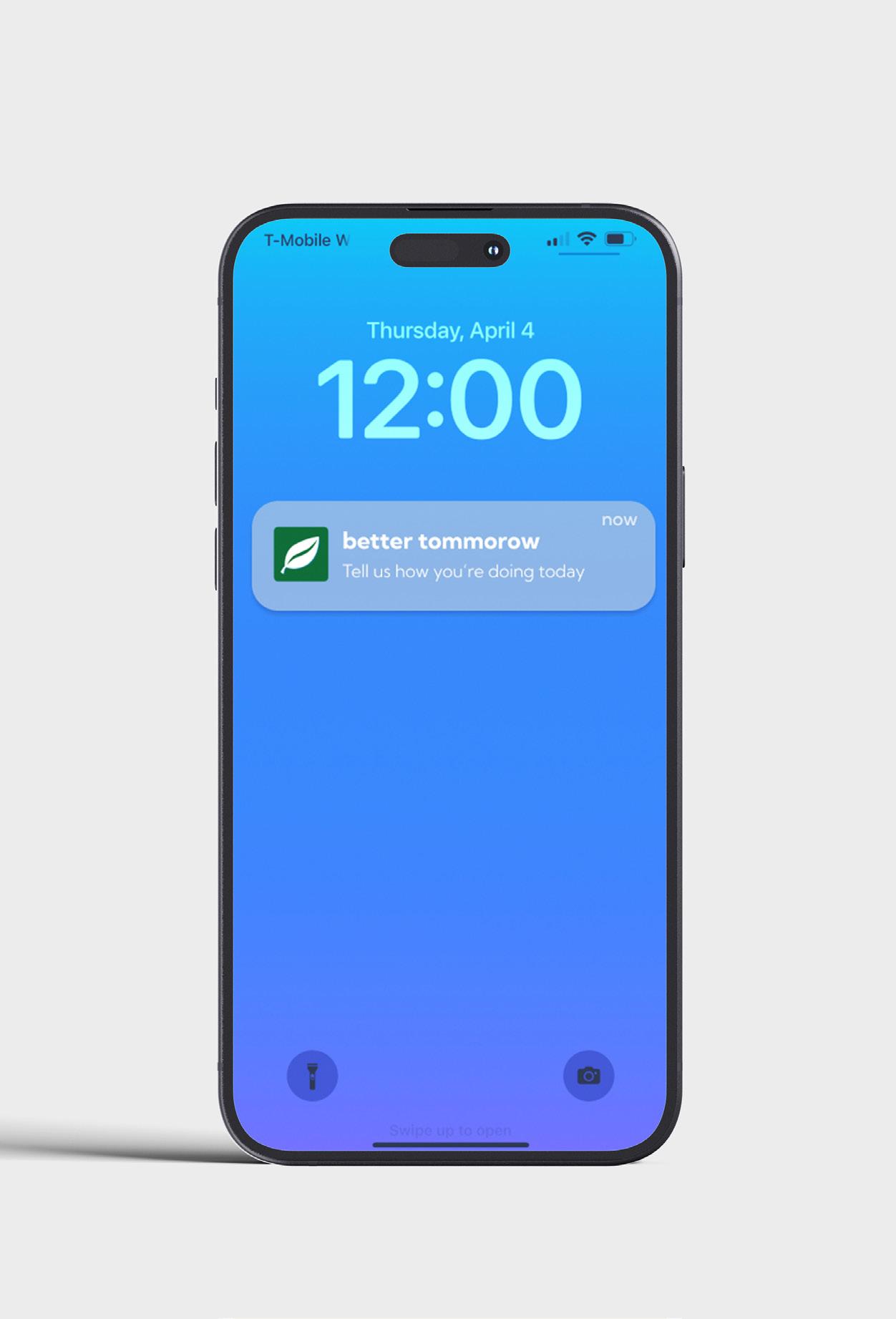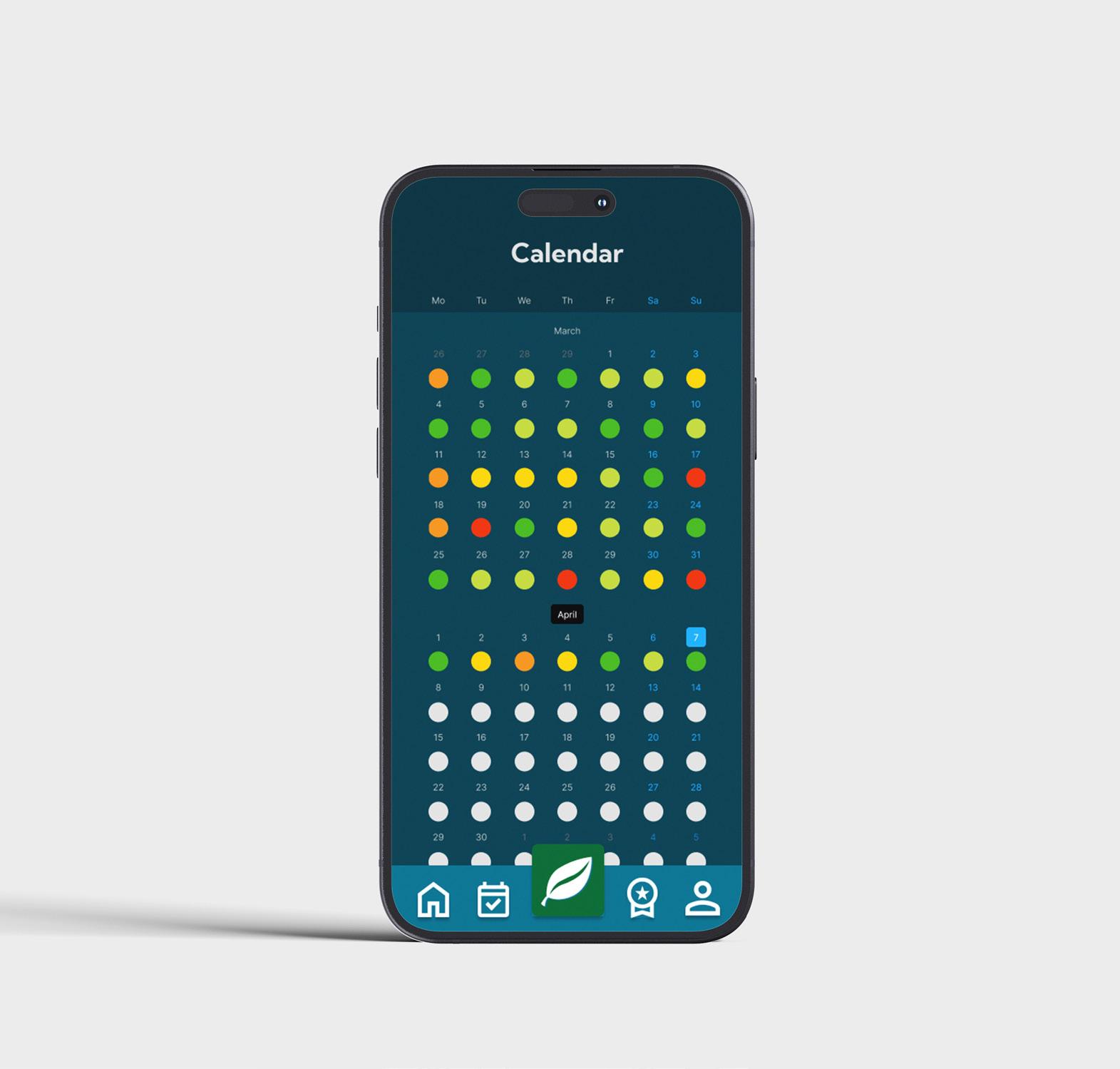


2
Thesis Problem Problem Statement Thesis Question DME & SME Research 01 02 03 04 05 4-5 pg. 6-7 pg. 8-9 pg. 10-11 pg. 12-13 pg.
Table of Contents
3 Thesis Solutions App Design Conclusion Logo Biography 07 08 09 10 11 12 Citation & Contributors 16-17 pg. 18-21 pg. 22-27 pg. 28-29 pg. 30-31 pg. 32-33 pg. Competitive Analysis 06 14-15 pg.


4
01
Thesis Problem


According to the National Institute of Mental Health: One in five U.S. adults live with a mental illness (57.8 million in 2021).
According to the World Health Organization: Depression is one of the leading causes of disability. Suicide is the fourth leading cause of death among 1529 year olds.
5


6
Statement 02
Problem


Navigating the rollercoaster of everyday life, we as humans face challenges that sway our mental health from highs to lows. Recognizing the balance between progress and setbacks, my mission is to empower users with a daily check-in app that tracks their journey. In order to understand the variables that help or hinder us, it is important to recognize the changes in our lives that affect us.
7


8
03
Thesis Question


How can applications of user experience design processes allow me to create a tool that helps users better understand and improve their mental health?
9
Design Mentor
10
An Lam Interactive Designer at PingIdentity Denver, CO
Skill Mentor
Therapist
11
Renee Gray
at Headspace Health Orange County, CA


12
05
Research

Looking at a randomized controlled group trial with 50,000 patients conducted by Simon B. Goldberg, they did not find any “convincing evidence” that a mobile app could greatly improve the outcomes of depression, anxiety, suicide, and overall wellbeing. Another study by BMC Psychology compared the popular meditation app, Headspace, to other apps that included guided breathing. They found that without the active component of mindfulness gained through meditation, there were nosignificant improvements. Treatments work when we believe in them.
When analyzing different types of psychotherapy, the most symptomatic improvement and progress was strongly observed when the patient had a relationship with the therapist. The ability to speak in a secure place, receive validation, and develop a trusting relationship were critical in successful therapy. Although mobile apps remove the human element, it doesn’t mean that they’re ineffective. Mobile apps can complement therapy with symptom trackers, reminders, and goal setters, as well as lessons on meditation methods. The great benefit of telehealth (the use of communications technologies to provide health care at a distance) is its capability to provide portability, accessibility, and flexibility to both the client and therapist.

13
Competitive Analysis

Guided meditation programs aimed to reduce stress
Helps find a bedtime routine, relaxing music, bedtime stories, and exercises
14

Provides the user with a licensed therapist
15


16 07
Thesis Solution


By creating an app that provides a daily, yet simple, check-in, those who wish to track their mental health will be able to see their own progress and growth.
This app does not cure mental illness, but is a tool to help the user better understand regularities that can be improved.
17
Logo
“Better Tomorrow” embodies a sentiment of hope and optimism, serving as a beacon of encouragement even amidst challenging circumstances. It signifies the belief that despite any present difficulties, the promise of improvement and brighter days ahead remains steadfast. The phrase encapsulates resilience and a forward-looking mindset, inspiring individuals to persevere with the assurance that tomorrow holds the potential for positive transformation and progress.

18




19
Logo Mark

The leaf symbol within the logo epitomizes the notion of growth and progress. The thoughtful integration of green and blue hues not only fosters visual cohesion but also elicits a sense of harmony, contributing to an atmosphere of relaxation and serenity.
20




21

App Design

22
08



23



24


Introducing Better Tomorrow, an innovative application designed to streamline the monitoring of mental wellbeing with simplicity and efficacy. Our user-friendly interface offers a seamless experience, providing daily notifications prompting users to engage in self-check-ins. By systematically tracking user behavior over time, Better Tomorrow facilitates the identification of patterns and trends, empowering individuals to proactively address challenges and enhance their overall quality of life.
25

Memo Box
Option to log notes similar to a journal

Simple Likert Scale
Easy and quick way to record daily evaluation

26


Calendar View
Ongoing visualization of data to monitor mental health journey

Interactive Days
Clickable to review previous logs
27


28 Conclusion 09

Better Tomorrow is a new and innovative app that provides the user with a platform to track their own mental growth. With the implementation of user-friendly design, Better Tomorrow will empower those struggling with mental health challenges to take charge of their own journey.

29


30
10
Biography


Joo Pyo
Digital designer/content creator and graduate from the University of Colorado Denver. Passionate and driven visual architect advanced in illustrating a story through skillfully curated compositions of various concepts and style frames. Experienced in a multitude of software programs used to captivate an audience through innovative and aestheticallyinviting user f1ow and graphic design. Adept in bridging the cross-functionality of technology and creativity, providing the user with a seamless customer journey.
31
Citation
CDC. (2023, April 28). Data and statistics. Centers for Disease Control and Prevention. https://www.cdc.gov/mentalhealth/data_publications/index.htm
NAMI. (2023, April). Mental health by the numbers. National Alliance on Mental Illness. https://www.nami.org/mhstats
NIH. (2023, March). Mental illness. National Institute of Mental Health. https:// www.nimh.nih.gov/health/statistics/mental-illness
WHO. (n.d.). Mental health. World Health Organization. https://www.who.ihealthtopics/mental-health#tab=tab_1
CDC. (2023, April 28). Data and statistics. Centers for Disease Control and Pre vention. https://www.cdc.gov/mentalhealth/data_publications/index.htm
Collier, S. (2022, February 7). Is a mobile app as good as a therapist?. Harvard Health. https://www.health.harvard.edu/blog/is-a-mobile-app-as-good-as-atherapist-202202072683
Pooja, C. (2018, March 23). Do mental health mobile apps work. https://www. ncbi.nlm.nih.gov/pmc/articles/PMC5897664/
Simon B. Goldberg (2022,January 18). Mobile phone-based interventions for mental health: A systematic meta-review of 14 meta-analyses of random ized controlled trials. https://journals.plos.org/digitalhealth/ article?id=10.1371/journal.pdig.0000002
Chris. Noone (2018, April 5) A randomizsed active-controlled trial to examine the effects of an online mindfulness intervention on executive control, a critical thinking and key thinking dispositions in a university student sample. https://bmcpsychology.biomedcentral.com/articles/10.1186/s40359018-0226-3
32
Special Thanks To
Michelle Carpenter
An Lam
Travis Vermilye
Renee Gray
Amara Hulslander
Jean Sung
33

































